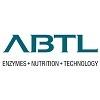Check out what is new in Poultry Industry
Find the best technical articles, forums, and videos on Poultry Industry at Engormix. Enter now and interact with the world's largest agricultural social network.
INTRODUCTION Campylobacter spp. is well recognized as the leading cause of bacterial foodborne diarrheal disease and poses a serious economical and health risk globally (Skanseng et al., 2010; Silva et al., 2011; Meunier et al., 2015). The most common route of campylobacteriosis infection in humans is the handling or consumption of contaminated poultry meat (Lee and Newell, 2006). Campylobacter spp. is a commensal organism found in cattle, sheep, swine, wildlife, and domestic...
Comments : 0
Recommendations: 0
INTRODUCTION As a nonpolar amino acid, Valine (Val) is one of the most hydrophobic amino acids (Brosnan and Brosnan, 2006). Val, leucine, and isoleucine are called branched chain amino acids due to the branched chain structures of their R groups. In animals, Val serves as a precursor for the synthesis of protein and other amino acids (Ferrando et al., 1995). As a glucogenic amino acid, Val is a substrate for glutamine synthesis which is involved in the Krebs cycle (Wu,...
Comments : 0
Recommendations: 2
.jpg&w=3840&q=75)

Candidate Genes Associated with Survival Following Highly Pathogenic Avian Influenza Infection in Chickens
Suggested link
1. Introduction Necrotic enteritis (NE) is caused by the Gram-positive bacterium Clostridium perfringens [1], while the etiological agents of coccidiosis are Eimeria, a genus of apicomplexan parasites [2]. Both NE and coccidiosis are among the most economically significant infectious diseases facing the poultry industry causing growth retardation, morbidity, and even mortality [1,2]. With a growing number of countries having withdrawn in-feed antimicrobials for growth promotion...
Comments : 0
Recommendations: 0
INTRODUCTION Hemp ( Cannabis sativa L.) is an annual herbaceous plant belonging to the family Cannabinaceae (Turner et al., 1979), traditionally grown for fiber and seed production. Whole hemp seed contains approximately 25% crude protein, 33 to 35% oil, and 34% carbohydrate, in addition to a broad range of vitamins and minerals (Darshan and Rudolph, 2000; Callaway, 2004; House et al., 2010). Hemp seed oil contains 75 to 80% polyunsaturated fatty acids (PUFA),...
Comments : 0
Recommendations: 0


Innovative Directions in Aflatoxin Testing Point to Measureable Gains in Quality Of Lab Data
Suggested link
I. INTRODUCTION Both glucose and amino acids are essential for muscle protein deposition and feed conversion efficiency and total tract nitrogen retention was reported to be influenced by protein and starch digestion in broiler chickens (Liu et al., 2013). Liu and Selle (2015) found that 76% of the variation in the feed-conversion ratio (FCR) could be attributed to starch and protein digestion rates in sorghum-based diets. Quadratic relationships between proximal jejunal...
Comments : 1
Recommendations: 1
INTRODUCTION Water is the primary fluid necessary for human life. About 60% of the human body composition is water and life would not be possible without it (Chaplin, 2001). Not only is water important for the optimal functioning of the human body, but also it is the most important nutrient in the diet of some animals and the development of plants. A significant percentage of the water in the world is used in agriculture practices. In the United States, 80% of the national water...
Comments : 2
Recommendations: 1
INTRODUCTION Tight junctional complexes comprise a key component of the intestinal barrier by sealing the apical surfaces of adjacent epithelial cells. “Leaky” tight junctions provide paracellular portals through which pathogenic bacteria can cross the gastrointestinal epithelium and ultimately enter the systemic arterial circulation. This process of bacterial leakage across the intestinal epithelial barrier, known as bacterial translocation, can lead to the...
Comments : 0
Recommendations: 0
Introduction Antimicrobials, including antibiotics, antivirals, antifungals, and antiparasitics, are used to prevent and treat infections in humans, animals, and plants. 1 Microbes can become resistant to antimicrobials as a result of ineffective or prolonged antimicrobial treatment. This resistance may be “innate” owing to the slow and long evolutionary process that microorganisms undergo to adapt to changing environmental conditions; this adaptation is...
Comments : 0
Recommendations: 2
The aim of this study was to evaluate the effect of a yeast extract supplemented in feed and a vitamins-aminoacids compound in the drinking water on the performance and microbiology count of broiler chickens. A 42- day experiment was carried out and replicated twice in time at Universidad ISA. In each experiment, 240 straight run day-old chicks were randomly distributed in 4 treatments of a Completely Randomized Design with a factorial arrangement. The 4 treatments were from the combination...
Comments : 0
Recommendations: 1
With the aim to evaluate the effect of the supplementation of different concentrations of a Moringa oleifera liquid extract in the drinking water on the hematology profile, and performance of broiler chickens, two experiments were carried out at Universidad ISA. Each experiment had four (4) treatments (0, 1.87, 3.75 y 7.5 liters of M. oleifera extract in 937.5 liters of drinking waters), which were randomly distributed in a Completely Randomized Design. Each treatment had six (6)...
Comments : 3
Recommendations: 0
.jpg&w=3840&q=75)

Driving Sustainability in Animal Nutrition: Evonik’s Bold Approach
Suggested link
by Sam Shafer
Thanks to breakthroughs in poultry science, improvements in the genetic potential of broiler chickens have cut the average production cycle in half. Now producers are looking for ways to improve egg hatchability and the uniformity and quality of broiler chicks.
Hatcheries use two major methods for incubating eggs: multi-stage systems and single-stage systems. Multi-stage incubators combine eggs from different farms and incubate embryos at...
Comments : 0
Recommendations: 1
by Sam Shafer
Looking for a golden goose? Try a goose that’s two years old. In a recent study, researchers with the Heilongjiang Academy of Agricultural Sciences found that goose egg yolks (the most valuable part of the egg) tend to be at their largest following the goose’s second laying season.
The Journal of Applied Poultry Research study links a...
Comments : 0
Recommendations: 0


Current market review and perspective of Florfenicol, Tilmicocin, vitamins and aminoacids
Suggested link
by Sam Shafer
Ethiopian scientists evaluate three promising chicken breeds in rural and small-scale systems
Improving food security around the world means boosting protein production in ways that work best for local farmers. In Ethiopia, the government and outside agencies have promoted exotic, higher-yielding chicken breeds. Unfortunately, most exotic breeds introduced in the country require a level of investment in feed, veterinary...
Comments : 0
Recommendations: 0
Introduction Probiotics are living microorganisms which when administered in adequate amount confer health benefits on the host. Probiotics are one of the more efficient methods of pathogen control and have not detrimental effects to the environment as...
Comments : 4
Recommendations: 2


Effects of <i>Ganoderma lucidum</i> fermentative products supplementation on growth performances, carcass characteristics and immune response in Native Chickens
Suggested link
1. Introduction Mycotoxins are low molecular weight compounds produced as secondary metabolites by filamentous fungi contaminating crops in the field or warehouses when environmental conditions of temperature and humidity are adequate. These metabolites have no biochemical relevance to fungal growth or development, and they constitute a chemically and toxicologically heterogeneous group, which are together only because they can cause diseases, including death, to human beings...
Comments : 1
Recommendations: 0
1. Introduction The Food and Agriculture Organization of the United Nations (FAO) estimated that 25% of the cereal production is contaminated by mycotoxins [1]. Aflatoxin B 1 (AFB 1 )—the major secondary metabolite of Aspergillus flavus, A. parasiticus, and A. nomius—has adverse effects on humans and animals that result in health disorders and economic losses. To avoid these harmful effects, many physical, chemical, and biological decontamination...
Comments : 0
Recommendations: 0
1. Introduction Mycotoxins are secondary toxic metabolites produced by filamentous fungi which, even at low concentrations, represent an important danger for both animal and human health [1,2]. Currently, over 300 mycotoxins have been identified worldwide, being aflatoxins, ochratoxins, zearalenone, trichothecenes, and fumonisins, the most frequently found with synergistic toxic effects reported when more than one of these mycotoxins are present in the feed [3,4]. Mycotoxins are...
Comments : 1
Recommendations: 0
During the process of digestion and absorption of ingested feed in poultry, significant losses of endogenous amino acids (EAA) occur from various digestive secretions, mucoproteins and the epithelial cells lining the gastrointestinal tract (GIT). Several factors such as the development of GIT and changes in dry matter intake (DMI) with advancing age, type of bird, method of euthanasia and ileal digesta collection may influence EAA loss. Correction for these inevitable losses is necessary to...
Comments : 0
Recommendations: 1
.jpg&w=3840&q=75)

Candidate Genes Associated with Survival Following Highly Pathogenic Avian Influenza Infection in Chickens
Suggested link
.mp4&w=3840&q=75)
Fiodor Marchenkov (Kronos Agro LLC, Kiev, Ukraine) offers his views on fat digestion and energy in animal diets....
Comments : 33
Recommendations: 13
Infectious laryngotracheitis is an avian respiratory disease which is caused by infectious laryngotracheitis virus (ILTV), and clinical signs vary from coughing, conjunctivitis, and gasping to expectoration of bloody mucus and death (1). Whereas genomic database analysis allowed the identification of an ILTV field strain in Australia as a causative agent of outbreaks as a result of recombination between attenuated vaccine viruses (2), genomic sequence data from viral outbreaks in South...
Comments : 1
Recommendations: 1










.jpg&w=3840&q=75)



















